
About UsThe Numismatic Bibliomania Society is a non-profit organization promoting numismatic literature. For more information please see our web site at coinbooks.org SubscriptionsThose wishing to become new E-Sylum subscribers (or wishing to Unsubscribe) can go to the following web page link MembershipThere is a membership application available on the web site Membership Application To join, print the application and return it with your check to the address printed on the application. Membership is only $15 to addresses in the U.S., $20 for First Class mail, and $25 elsewhere. For those without web access, write to: David M. Sundman, Secretary/TreasurerNumismatic Bibliomania
Society AsylumFor Asylum mailing address changes and other membership questions, contact David at this email address: dsundman@LittletonCoin.com SubmissionsTo submit items for publication in The E-Sylum, just Reply to this message, or write to the Editor at this address: whomren@coinlibrary.com
BUY THE BOOK BEFORE THE COINYou won't regret it! |
- WAYNE'S WORDS: THE E-SYLUM DECEMBER 30, 2012
- BRYCE BROWN NUMISMATIC LITERATURE PRICE LIST UPDATED
- NEW BOOK: COINS THAT TELL A STORY
- NEW BOOKS BY ROBERTO JOVEL
- NEW BOOK: THE OFFICIAL NATIONAL PARK QUARTERS BOOK
- BOOK REVIEW: AMERICAN SILVER EAGLES
- ANGELO ROSATO, 1921 - 2012
- LIBERTY DOLLARS, LEGAL OPINIONS, AND TEST CASES
- NOTES FROM E-SYLUM READERS: DECEMBER 30, 2012
- FROM TEXAS TO THE MOON WITH JOHN LEONARD RIDDELL
- FEDERAL COIN EXCHANGE CATALOGUE MYSTERY SOLVED?
- QUERY: REAGAN FIRST TERM INAUGURAL MEDAL INFORMATION SOUGHT
- QUERY: 1902 PARIS IN LONDON EXHIBITION MEDAL UNIQUE?
- ELECTRONIC OPTION FOR PLATES IN NUMISMATIC LITERATURE
- DURASAFE COMPOSITE BANKNOTE PAPER ANNOUNCED
- MORE ON WEIGHING SLABBED COINS
- COMBIBAR: THE BREAKABLE GOLD BULLION BAR
- NEW YORK PUBLIC LIBRARY RENOVATION PLANS RELEASED
- AN 8 REALES 1812 SOMBRERETE (ZACATECAS)
- FEATURED WEB PAGE: BRITISH MUSEUM U.S. HOLDINGS
WAYNE'S WORDS: THE E-SYLUM DECEMBER 30, 2012

New subscribers this week include Donald J. Kolkman. Welcome aboard! We have 1,618 email subscribers, plus 206 followers on Facebook.
This week we open with an update from numismatic literature dealer Bryce Brown, several new numismatic books, and a new review from John and Nancy Wilson. Other topics include elongated coin encyclopedia author Angelo Rosato, Federal Coin Exchange catalogs, Reagan's first inaugural medal, and a new type of banknote paper.
To learn more about intaglio vs 'offset' banknote printing, the numismatic history of El Salvador, the 'Flight to America' zeppelin medal, the Lincoln movie gaffe, John Leonard Riddell's trip from Texas to the Moon, and why eight is a lucky number, read on. Happy New Year, and a have a great week, everyone!
Wayne Homren
Editor, The E-Sylum
BRYCE BROWN NUMISMATIC LITERATURE PRICE LIST UPDATED
I have just updated my online price list of numismatic auction catalogs, fixed price lists, periodicals, and reference material. Special offerings include: an affordable Deluxe Special Edition of Elder’s 1929 Lawrence sale with 22 original photographic plates, an unlisted Federal Coin Exchange auction sale of April 21-22 1951, a lovely Christensen 1964 Ubilla-Echevez sale, a desirable Sotheby 1983 Virgil Brand Collection of Russian and Polish coins, a tough John Reich Journal Vol. 1 No. 1, and many other rarely-offered items.
Readers are invited to visit my webpage at brycebooks.squarespace.com or contact me via email at numismatics@att.net .
Happy new year to all!
NEW BOOK: COINS THAT TELL A STORY
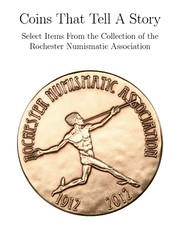 The Association's new book, Coins That Tell A Story - Select Items from the Collection of the Rochester
Numismatic Association, is available from LuLu.com: http://www.lulu.com/shop. The book is co-authored by
16 club members and shows 52 numismatic items in full color with at least a one-page description of each item.
The Association's new book, Coins That Tell A Story - Select Items from the Collection of the Rochester
Numismatic Association, is available from LuLu.com: http://www.lulu.com/shop. The book is co-authored by
16 club members and shows 52 numismatic items in full color with at least a one-page description of each item.
The 8.5" x 11" hard cover volume costs about $50. A few copies may be available at meetings although the last batch sold out fast. Get one and see if you can obtain all sixteen co-authors' signatures, as well as Q. David Bowers, who wrote the Introduction. Tim Corio conceived of the project; he was ably assisted by Lisa Fybush (editing and proofreading) and Darlene Corio (typing). Coins That Tell A Story is a truly fine team effort that brings the RNA Collection before both the membership and the public.
Copyright: Standard Copyright License
Publisher: Rochester Numismatic Association
Published: October 11, 2012
Language: English
Pages:152
Binding: Hardcover (casewrap)
Interior Ink: Full color
Weight: 1.47 lbs.
Dimensions (inches): 8.25 wide x 10.75 tall
Price: $46.75
To order the book on LuLu.com, see: Coins The Tell A Story (www.lulu.com/shop/timothy-corio/coins-the-tell-a-story/hardcover/product-20446489.html)
NEW BOOKS BY ROBERTO JOVEL
Editorial Academica Española has recently published some books that I wrote as follows:
Monedas de proclama de Centroamérica durante la anexión al Imperio Mexicano de Iturbide (Central America proclamation coins issued during the annexation to Iturbide´s Mexican empire), in Spanish.
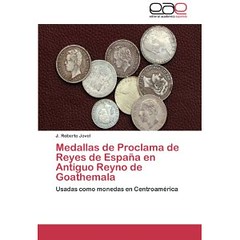 Medallas de proclama de los Reyes de España usadas como monedas en Centroamérica (Proclamation medals of the Kings of Spain used as coins in Central America), in Spanish.
Medallas de proclama de los Reyes de España usadas como monedas en Centroamérica (Proclamation medals of the Kings of Spain used as coins in Central America), in Spanish.
Las monedas en los tiempos de Jesucristo (Coins at the time of Jesus Christ), in Spanish.
Numismatic History of El Salvador in the Nineteenth Century, Volume II, in English (this is the second part of which the initial one was published by Numismatics International several years ago).
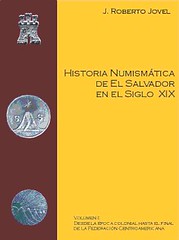 They are available for sale through Amazon. When you go into books, introduce my name Roberto Jovel in the search window, and they will all be shown.
I thought this would be of interest to your readers.
They are available for sale through Amazon. When you go into books, introduce my name Roberto Jovel in the search window, and they will all be shown.
I thought this would be of interest to your readers.
Professor David Fiero is writing a review of the first two books listed above. Another book that I have written together with the Costa Rica Numismatic Museum Curator, Manuel Chacon, on Francisco Morazan and his influence on Central American numismatics will be published shortly. My very best wishes for a Happy 2013.
To find Roberto Jovel's books on Amazon, see:
www.amazon.com/s/ref=nb_sb_noss?url=search-alias%3Dstripbooks&field-keywords=
Roberto%20Jovel
NEW BOOK: THE OFFICIAL NATIONAL PARK QUARTERS BOOK
David Ganz writes:
Well, after a year and a half of hard work, my book on the National Park quarters is at the printer. Zyrus is the publisher ($14.95) I anticipate that copies will be available from Zyrus round January 15th.
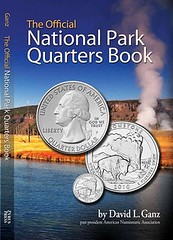 Zyrus Press, whose publishing backlist includes books helping older people collect coins, the story about the fabulous 1913 Liberty nickel, a buyer’s guide to silver dollars, and gold coins of the New Orleans Mint, has added a very current issue–The Official National Park Quarters Book, by David L. Ganz.
Zyrus Press, whose publishing backlist includes books helping older people collect coins, the story about the fabulous 1913 Liberty nickel, a buyer’s guide to silver dollars, and gold coins of the New Orleans Mint, has added a very current issue–The Official National Park Quarters Book, by David L. Ganz.
Ganz, who is a past president of the American Numismatic Association and one of the innovation creators of the state quarter program, is an award-winning writer with more than 30 books to his credit, about half of which are about coinage. He also is an author of what is currently hot in the U.S. Mint’s production schedule – quarters bearing national park designs.
By the time that the program’s first round is complete in 2019, the United States Mint will be a beneficial program for the government, and profitable in their specialty division that manufactures circulating coin designs, half cent to double eagle. The book tells the story of how the coins was widely popular, even though some of its sponsors tried to renege on the deal.
Covered in the one volume, 275 page paperback is an encyclopedic coverage of the national park quarters whose issues include a large Five Ounce (Three Inch Diameter) “Quarter” coin, mandated at those dimensions by Congress; proof versions, silver non-circulating legal tender regular-size coins, and copper nickel clad coins that circulate.
Composed of two sections, starting with the background of how the coins were created out of the success of the 50 state quarter coin program, its Congressional sponsorship, and visions of significant profit for the Mint, which, founded in 1792 produces state quarters and other coins at Philadelphia, Denver, San Francisco and West Point.
The second half of the book is a catalogue which includes photos of all of the losing designs, all the while paying homage to the winners. Sketches of complemented by direct quotations of the design hearings held for each coin before the Commission of Fine Arts in Washington and the Citizens Commemorative Coin Advisory Committee
Mintage figures, current prices, and much previously unpublished information about each coin’s creation are rounded out with commentary and analysis from former Mint Director Philip Diehl (who recognizes Ganz as the father of the state quarter program), Donald Scarinci, who serves on the Citizens Advisory Committee and knows the author as a fellow lawyer who practices in New York and New Jersey, and Arthur Friedberg, head of the Coin & Currency Institute and a friend of the author since the early 1970's.
Ganz started writing about coins in 1965, and by 1969, became the newly minted Washington correspondent for Krause Publications, home to Numismatic News and Coins Magazine. His “Under the Glass” column has been published in each of six decades since. He has written thousands of articles in hobby newspapers and magazines and found the time to write books while also practicing law and serving as a local county legislative leader and town Mayor.
He served on the board of the American Numismatic Association from 1985-1995, and as its 48th president (1993-1995). A founding board member of the Industry Council for Tangible Assets, he is a recipient of the ICTA Lifetime Achievement Award, and in 2012, both The Bergen County NAACP Freedom Fund Award, and the Care Plus “Courage” Award.
The Official National Park Quarters Book. By David L. Ganz. 275 pages, index, illustrated, price guide. $14.95 (paperback). Published by Zyrus Press.
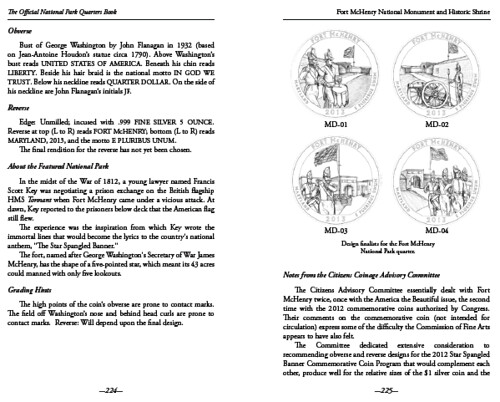
For more information, see: www.NationalParkQuarterBook.com
THE BOOK BAZARRE
BOOK REVIEW: AMERICAN SILVER EAGLES
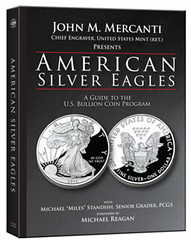 American Silver Eagles – A guide to the U. S. Bullion Program, John M. Mercanti, Chief Engraver, United States Mint (Ret.), With Michael “Miles” Standish, Senior Grader, PCGS, Foreword by Michael Reagan, 2012, Whitman Publishing, LLC, Reviewed by John and Nancy Wilson, NLG
American Silver Eagles – A guide to the U. S. Bullion Program, John M. Mercanti, Chief Engraver, United States Mint (Ret.), With Michael “Miles” Standish, Senior Grader, PCGS, Foreword by Michael Reagan, 2012, Whitman Publishing, LLC, Reviewed by John and Nancy Wilson, NLG
This hard cover reference has 164 pages and hundreds of excellent color illustrations. In the foreword by Michael Reagan he says: President Reagan was a very good friend to the numismatic hobby. The American Silver Eagle was authorized by President Ronald Reagan on July 9, 1985.
This is John Mercanti’s first book and along with Michael Standish have done a superb job. Michael Standish started collecting at a young age and today is vice-president of business development for PCGS and a senior grader. John Mercanti received his artistic training at the Pennsylvania Academy of Fine Arts, the Philadelphia College of Art, and the Fleisher Art Memorial School. In 1974 he started as a sculptor-engraver (under the legendary Frank Gasparro) for the U. S. Mint. In 2006 he became the chief engraver and retired in 2010.
Mr. Mercanti is credited with producing more coin and medal designs than any employee in the history of the U. S. Mint. He was the sculptor/engraver of the American Silver Eagle reverse. Weinman’s half dollar design was redesigned by John Mercanti and used on the American Silver Eagle obverse.
Chapter 1: Covers the history of the U. S. Bullion Coin Program. Analyzed is the value of silver and gold from the 1930s to mid -1960s. The Executive Order dated April 5, 1933 requiring the delivery of gold to the government, and the 1974 President Ford re-legalization of private ownership of gold – in bars, coins and certificates are discussed.
Chapter 2: Behind the Scenes at the U. S. Mint. Mr. Mercanti discusses the elements of good design; design selection; The Citizens Coinage Advisory Committee, and the U. S. Commission of Fine Arts. Mr. Mercanti also talks about, engraving, die preparation and the cleaning process. A sampling of 24 American Eagles is shown for comparison with each other.
Chapter 3: Date-by-Date (Coin-by-Coin) Study of American Silver Eagles. This is the largest and most interesting chapter. The historical context of each coin gives readers a market overview. Each coin from 1986 to 2012 in proof, bullion, burnished, along with the special 2011, 25thAnniversary special set is discussed and shown .
Chapter 4: Other U. S. Bullion Coins and Medals. Covered in this chapter are: the American Arts Commemorative Series Medals (1980 - 1984); America the Beautiful Silver Bullion Coins (2010 - 2021); American Eagle Gold Bullion Coins (1986 to Date); American Buffalo .9999 Fine Gold Bullion Coins (2006 to Date); First Spouse 10 Gold Bullion Coins 2007 – 2016); MMIX Ultra High Relief Gold Coin (2009); American Eagle Platinum Bullion Coins (1997 to Date), and finally the American Eagle Palladium Bullion Coins (Proposed).
Appendix A: Populations, Mintages, and Values. The Certified Coin Populations from the Professional Coin Grading Service (PCGS) in grades 65 to 70 are given. The American Silver Eagle Mintages are shown for the bullion strikes and proofs. Values for the Bullion Strikes (Mint State) and Proofs are also shown.
Appendix B: Illustrated Catalog of John Mercanti’s Numismatic Work. On seven pages you see the U.S. coins and a sampling of the medals designed and/or sculpted by John Mercanti.
Glossary: The terms used to describe coins are covered in four pages.
John M. Mercanti and Michael “Miles” Standish have come together and authored an outstanding reference. The book covers very thoroughly anything and everything you would ever want to know about American Silver Eagles. We recommend “American Silver Eagles, A Guide to the U. S. Bullion Coin Program,” for coin collectors, dealers, investors and historians. It is a great value at the list price of $29.95. For information on purchasing it, you can contact the publisher at: Whitman Publishing, LLC, 3103 Clairmont Rd., Suite B, Atlanta, Ga 30329 or visit their web page at, www.whitmanbooks.com, or call (800) 546-2995.
ANGELO ROSATO, 1921 - 2012
Ben Gastfriend writes:
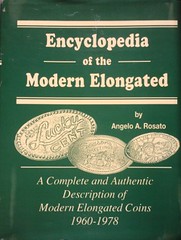 Angelo A. Rosato, author of the tome Encyclopedia of the Modern Elongated (a standard reference), and several other books and pamphlets on the topic of elongated coins, passed away on November 13th. Rosato was a jeweler by trade, a producer of elongated coins, and a past-president of The Elongated Collectors. Rosato is also notable for his large collection of Kennedy exonumia. Aubrey Mayhew bought this collection and referenced much of it in his book The World's Tribute to John F. Kennedy in Medallic Art.
Angelo A. Rosato, author of the tome Encyclopedia of the Modern Elongated (a standard reference), and several other books and pamphlets on the topic of elongated coins, passed away on November 13th. Rosato was a jeweler by trade, a producer of elongated coins, and a past-president of The Elongated Collectors. Rosato is also notable for his large collection of Kennedy exonumia. Aubrey Mayhew bought this collection and referenced much of it in his book The World's Tribute to John F. Kennedy in Medallic Art.
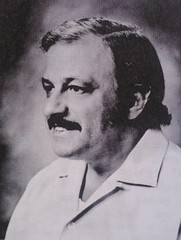 Angelo Anthony Rosato age 91 of New Milford died peacefully on Tuesday November 13, 2012 in the home of daughter Geraldine. Mr. Rosato was born April 9, 1921 in Waterville, CT a son of the late Marco and Immacolata (Iannelli) Rosato of Morcone, Italy. He was a lifelong resident of New Milford.
Angelo Anthony Rosato age 91 of New Milford died peacefully on Tuesday November 13, 2012 in the home of daughter Geraldine. Mr. Rosato was born April 9, 1921 in Waterville, CT a son of the late Marco and Immacolata (Iannelli) Rosato of Morcone, Italy. He was a lifelong resident of New Milford.
In 1953 he opened A.A. Rosato Jeweler’s, located on 44 Bank Street, New Milford, and was in business for 32 years before retiring in 1985. He was a charter member of the New Milford Chamber of Commerce. He was also a member of the American Legion for over 50 years. Mr. Rosato was an Artist and enjoyed coin collecting as a hobby. He was a member of various coin clubs in the area and president of the New Milford coin club in 1967. He became interested in a new facet of numismatics, collecting elongated coins. With this passion for the elongated coin and using his professional talent, he started to design, hand engrave and roll his own elongated coin collection. He wrote and published the most comprehensive reference guide and catalog of elongated coins produced from 1960-1978 called the “Encyclopedia of the Modern Elongated”
To read the complete obituary, see: Angelo A. Rosato (www.hullfuneralservice.com/fh/obituaries/obituary.cfm?o_id=1823982&fh_id=12534)
LIBERTY DOLLARS, LEGAL OPINIONS, AND TEST CASES
Howard A. Daniel III writes:
A week or so ago, Colin Bruce sent me an email with the title: "America, Designed by Geniuses, Run by Idiots." It lists several points prefaced by: "You know you live in a Country run by Idiots if... "
I added the following item to it and sent it back to him: "You know you live in a country run by idiots when you can get prosecuted for making fantasy silver dollars which are called counterfeits by the government... and Chinese counterfeits of US silver dollars are being imported into the country by the tens of thousands."
I know the editor of The E-Sylum tries to keep political items out of this publication, so the following is my attempt to stay as close to the facts as possible.
I do not agree with eBay or Central States banning Liberty Dollars. It is too much "political correctness" for me and has no legal basis.
My definition of legal tender numismatic collectibles are; authentic, counterfeit, replica and fantasy.
a. An authentic piece is one coming from a government authorized maker and is/was legal tender;
b. a counterfeit is a copy of the authentic pieces and is used like an authentic piece as legal tender;
c. a replica is a copy of the authentic piece but made when it is no longer legal tender;
d. and a fantasy is a piece that never existed as legal tender.
As far as I know, all United States coins and notes ever minted or printed are still legal tender. United States law forbids anyone from making a counterfeit (b) but it does not forbid replicas (c) if they are countermarked with "Copy." Liberty Dollars are not copies of US legal tender but are pieces that never existed as legal tender, i.e., fantasies (d).
Besides Liberty Dollars, there are hundreds of currently circulating fantasies in the United States with which you can purchase goods and services. Is the US Government going to now waste even more of our tax dollars prosecuting each community and/or person making/using these circulating fantasies? Do they realize how many thousands of mayors, local officials and business owners are now liable for prosecution based on the Liberty Dollars court case?
The Liberty Dollars are fantasies but some politically correct lawyer in the US Government's Justice Department decided a fantasy Liberty Dollar was a counterfeit. English must be his/her second language! We are now a nation run by idiots and I believe there are so many like them in our society, that our country is lost as envisioned by those who wrote our Constitution.
Joe Boling writes:
On the Liberty dollars' status as counterfeits, at the time of the conviction a representative of the US Attorney's office in Charlotte was quoted in Coin World as saying that the NORFED currency was legal to own and display, just not to spend. She would not allow her name to be used in the article. However, when an ANA exhibitor asked in the summer of 2011 whether he could exhibit Liberty dollars and notes, ANA's general counsel asked the US Attorney's office for that statement in writing, and a contrary opinion was returned - which has gotten less and less favorable to collectors through the intervening months. I suggest that if we really want to see some movement on this issue, somebody like Steven Bieda pursue it (he's a Michigan legislator and frequent numismatic author and speaker).
Once the question was asked, the hard thing for the bureaucrats would have been to craft a response. The easy thing was to say no. So guess what? - they said no. Had the question never been asked and an exhibit been mounted, the hard thing for the bureaucrats would be to raise a commotion. The easy thing would be to honor to their earlier verbal direction and do nothing. So they most likely would have done nothing. Instead, the hobby now needs a test case to force the issue. And that's certainly not easy, making it rather unlikely to happen. But here's hoping the new year will bring some action on this issue one way or another. -Editor
To read the earlier E-Sylum article, see: DO LIBERTY DOLLARS DESERVE TO BE BANNED? (www.coinbooks.org/esylum_v15n53a14.html)
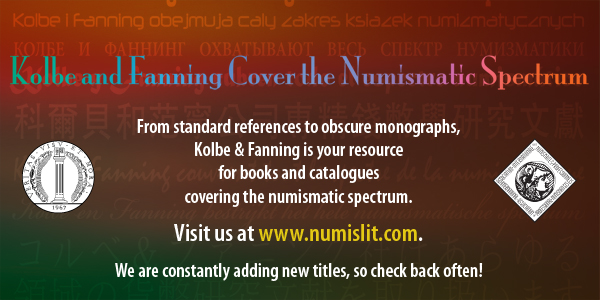
NOTES FROM E-SYLUM READERS: DECEMBER 30, 2012
More on the King Farouk Photo
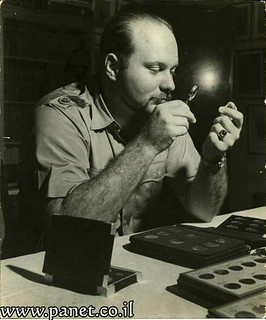 Pete Smith writes:
Pete Smith writes:
Last week you called me a showoff for identifying the photo of King Farouk. The following should put me over the top.
The photo of King Farouk was taken in 1943 by John Phillips. It was included in a well-illustrated article on Farouk in Life Magazine of April 10, 1944, pages 85 to 93. The photo of Farouk examining coins was on page 92. There is another photo of Farouk looking at his collection in the Life photo archives.
To read the earlier E-Sylum article, see: NOTES FROM E-SYLUM READERS: DECEMBER 23, 2012: Mystery Numismatists Identified (www.coinbooks.org/esylum_v15n53a08.html)
The Giori Presses
Joe Boling writes:
The entry about the Giori press test notes, and the presses' construction for the BEP by American Can Co, includes this line: "There is no proof the presses were ever used once they made it to Washington DC." Unless Giori presses were obtained from two sources, they certainly were used, for both stamps and notes for decades. They are only now being retired in favor of the Orlof presses.
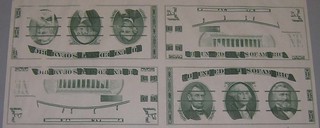
To read the earlier E-Sylum article, see: AMERICAN CAN COMPANY AND THE GIORI TEST NOTES (www.coinbooks.org/esylum_v15n53a10.html)
Intaglio vs 'Offset' Banknote Printing
Joe Boling writes:
Regarding the Peruvian counterfeiting operation, and the quote that "Printing equipment, including an offset press and materials for the production of banknotes, were also confiscated": readers should be aware that when the Secret Service refers to "offset," all they mean is "not intaglio." The operation could be direct lithography, offset lithography, letterpress, or digital (inkjet or laser) - Secret Service agents inexplicably call all of those "offset." The scale of this operation suggests direct plate lithography. For a very detailed display of this technology, see an early scene in the movie To Live and Die in L.A.
To read the earlier E-Sylum article, see: POLICE IN PERU SHUT DOWN MAJOR COUNTERFEITING OPERATION (www.coinbooks.org/esylum_v15n53a22.html)
Numismatic Gaffe in Lincoln Movie
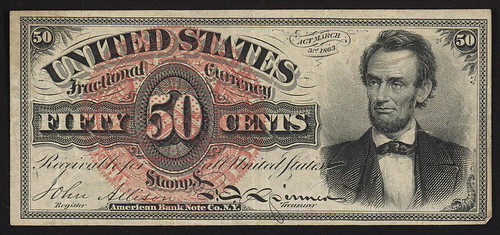
Joe Boling writes:
The Lincoln 50c fractional currency note that you illustrated last week reminds me of a recent query about a line in the movie "Lincoln." (Maybe it was in a letter to the editor of one of the numismatic weeklies.) In any event, Louise and I saw the movie this week, and sure enough, there was a throw-away line to the effect of "he won't even let us use a fifty-cent piece because it has a portrait of you [Lincoln] on it."
I won't try to explain the context, but the letter-writer was wondering what 50-cent piece could have been meant. I immediately thought of the fractional currency note, but on looking it up, it's still an anachronism, because that was a 4th series note not issued until the 1870s, so would also have been not available at the time of the film's story (early 1865). The screen-writers just booted it. They may have been fooled by the note itself - bearing the date of the enabling act, March 3rd, 1863.
To read the complete article, see:
Is 'Lincoln' the real deal?
(articles.latimes.com/2012/nov/28/entertainment/la-et-mn
-1128-lincoln-history-20121128)
To read the complete article, see:
How Accurate Is Lincoln?
(www.slate.com/blogs/browbeat/2012/11/09/lincoln_historical
_accuracy_sorting_fact_from_fiction_in_the_steven_spielberg.html)
To read the earlier E-Sylum article, see: HUFFINGTON POST'S FAVORITE OLD BANKNOTES AND CURRENCY (www.coinbooks.org/esylum_v15n53a24.html)
More on the Translation of "Nummis Nova"
Li/Tiesheng of China writes:
In your diary of December 16, 2012, you mentioned the Chinese calligraphy of a group named NUMMIS NOVA. I suggest the right translation according to pronunciation in Chinese should be 纽米丝 诺瓦, not 纽米氏 罗娃。I saw the translator's signature is Mr.黄,I doubt he might be from a Cantonese origin, not pure Mandarin.
Here are my mandarin translations of NUMMIS NOVA, literally and phonetically. In contemporary Chinese writings (I mean with simplified Chinese), the Chinese characters should write horizontally, not vertically, from left to right, not right to left. Best regards to Tom Kays and Joe Boling.

To read the earlier E-Sylum article, see: NOTES FROM E-SYLUM READERS: DECEMBER 23, 2012: Joe Boling on the Translation of "Nummis Nova" (www.coinbooks.org/esylum_v15n53a08.html)
Why Eight Is a Lucky Number
Li/Tiesheng writes:
I am a friend of Howard Daniels'. He mentioned the lucky number "8" in Viet Nam on American banknotes. I suppose this is from Chinese origin. In Chinese "8" is nearly a homophone of "发“(fa), which is related to " 发财"(get fortune), so it become a lucky number. The car plate with number "8" ,"88", "888" or "168"(get fortune all along the road) always could win a high bid.
To read the earlier E-Sylum article, see: LUCKY 8888 SERIAL NUMBER DOLLARS POPULAR IN VIET NAM (www.coinbooks.org/esylum_v15n53a23.html)
Why Bother Studying Alternative Cent and Nickel metals?
Dave Lange writes:
I find it astonishing that the Mint is wasting money trying to find substitute metals for the cent and nickel. In the case of the former, the cost of manufacturing the coins and delivering them to the channels of commerce will inevitably cost more than their face value, even if the material cost is zero. Both denominations have been rendered useless due to inflation and should be discontinued, the cent immediately and the nickel two or three years from now.


To read the earlier E-Sylum article, see: U.S. MINT 2012 ALTERNATIVE METALS STUDY (www.coinbooks.org/esylum_v15n53a12.html)
More on the 'Flight to America' Zeppelin Medal
 Dave Lange writes:
Dave Lange writes:
The Zeppelin medal is of more than passing interest to Americans, as the airship depicted became the U. S. S. Los Angeles. The medal was struck to commemorate her delivery flight to America in 1924. LZ-126 (Luftschiffbau Zeppelin 126) was furnished to the U. S. Navy as part of Germany's war reparations. The Navy assigned it hull number ZR-3 (Zeppelin Rigid 3), and she operated as a training ship in anticipation of the larger fleet airships Akron and Macon. When those ships entered service in 1931-33, the Los Angeles was decommissioned and partially deflated. The loss of the Akron prompted her re-inflation, but the Los Angeles was never recommissioned and ultimately was scrapped in 1939-40, after the Navy had given up on rigid airships altogether in favor of blimps.
To read the earlier E-Sylum article, see: AN ART DECO ZEPPELIN MEDAL (www.coinbooks.org/esylum_v15n53a17.html)
Correction: Smithsonian Institution
Nick Graver writes:
The Yap stone money article says: "Smithsonian Institute," instead of INSTITUTION, the proper title.
To read the earlier E-Sylum article, see: NOTES FROM E-SYLUM READERS: DECEMBER 23, 2012: More on Yap Stone Money (www.coinbooks.org/esylum_v15n53a08.html)
FROM TEXAS TO THE MOON WITH JOHN LEONARD RIDDELL
Mike Marotta writes:
I found Riddell's science fiction yarn in the archives here at the University of Texas. With the holidays making campus accessible, I am going to see if I can download a PDF of the entire publication. If so, I will post it to a website for general public access. For now, I created a blog post about Riddelll and his "Narrative."
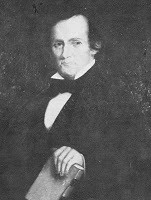 Riddell then moved to New Orleans. An active Democrat, he won an appointment as chief melter of the New Orleans Mint. He published A Monograph on the Silver Dollar, Good or Bad (E. Shepard, 1845; and Soxiedad Numismatica de Mexico, 1969.) The reprint is based on the fact that in 1845,the “silver dollar” was the Mexican peso; US federal dollars were rare patterns and low mintages. Mexican silver circulated as legal tender in the USA until 1857. While at the Mint, he improved on the machineries; his rotary ingot machine was in use as late as 1904.
Riddell then moved to New Orleans. An active Democrat, he won an appointment as chief melter of the New Orleans Mint. He published A Monograph on the Silver Dollar, Good or Bad (E. Shepard, 1845; and Soxiedad Numismatica de Mexico, 1969.) The reprint is based on the fact that in 1845,the “silver dollar” was the Mexican peso; US federal dollars were rare patterns and low mintages. Mexican silver circulated as legal tender in the USA until 1857. While at the Mint, he improved on the machineries; his rotary ingot machine was in use as late as 1904.
In 1839, Riddell came to Texas. He published “Observations on the Geology of the Trinity Country, Texas” in the American Journal of Science and Arts, November 1839. Riddell’s diary was republished as A Long Ride in Texas: The Explorations of John Leonard Riddell by Jo Breeden, editor, (Texas A&M University Press, College Station, Texas: 1994).
John Leonard Riddell was acknowledged as brilliant – even without peer – among his contemporaries, for instance by Edward H. Barton, then also of the University of Louisiana, who debated against him on the germ theory of disease. Though given to no end of professional quarrels – even convicted of assault while at the Mint – Riddell was a favorite with his chemistry students. Riddell was uncompromising, flamboyant, even violent. His debates in the pages of newspapers wore out at least one editor. Riddell rejected the “miasma” theory of disease, the claim that unhealthy vapors cause sickness; and believed firmly that diseases are caused by “animiculae” or “germs.” In arguing for this theory, he engaged every tool and trick known to rhetoric and debate.
On the evening of April 30, 1847, Riddell delivered to the People’s Lyceum of New Orleans, a story of aerial navigation. On May 8, from the Branch Mint, Riddell answered a note sent by nine of those present asking him to publish the adventure. He agreed to bring out Orrin Lindsay’s Plan of Aerial Navigation with a Narrative of his Explorations in the Higher Regions of the Atmosphere and his Wonderful Voyage Round the Moon! (New Orleans: Rea’s Power Press Office, 55 Magazine Street; 1847). I found this lost work archived in the microforms at the University of Texas Library. The full text runs 33 pages. Being Riddell presenting Lindsay’s story, it begins with several pages of background, including his own disclaimers and endorsements.
The story is remarkable for its scientific accuracy. Not only is it footnoted with laborious algebra to prove its points, but Riddell possessed the ability to imagine the physical consequences of space travel. “An indescribable sensation seized me. I could not tell up from down. I had lost all bodily weight. … The slightest springing effort, sent me slowly from one side of the balloon to the opposite.” He accurately described a candle flame in zero-g: “The flame of the taper became globular and less luminous; -- the heated air from it, seemingly not knowing which way to rise, diffused itself slowly in every direction.”
At 100 miles above the Moon, their orbit took “one hour, 54 minutes and 17 seconds. … We were everywhere presented with the evidences of former volcanic action.” On the dark side of the Moon, they saw an active volcano. “Respecting the appearance of the earth before starting from the moon, it is proper to relate that she looked like a new moon but fifteen times larger.” As they traveled back to Earth, the view changed. “She looked like an enormous moon, almost in her first quarter. …A delicate blue ring mottled with flakes of white… The prevailing green of fertile islands and continents, the pale sands of arid deserts, the naked rocks of mountain ranges, the glistening ramifications of rivers, and the polished convexity of the oceans all were clearly to be discriminated. … Brilliant beyond description were the icy regions about the South Pole, illuminated as they were by the sun.”
The balloon entered the atmosphere and the description could have come from The Right Stuff. “We felt a slight shock, and perceived a flash of light as we passed through the aerial billow; the friction of the balloon upon the air being sufficient to produce that effect. In a few moments our meteoric light ceased … and again the light reappeared accompanied by another slight shock… These singular phenomena, I presume were produced by the balloon’s rebounding from the aerial billows, just a cannon ball will ricochet along the surface of the water.”
After circumnavigating the Earth they land back at the launch site and the story ends.
Like other scientists from Thomas Huxley to Isaac Asimov and Rudy Rucker, Riddell wrote science fiction. Unlike anyone else, however, he was the first.
To read the complete blog article, see:
From Texas to the Moon with John Leonard Riddell
(necessaryfacts.blogspot.com/2012/12/from-texas-to-moon-with
-john-leonard.html)
THE BOOK BAZARRE
MAIL BID SALE # 18 CLOSES SATURDAY FEBRUARY 2, 2013
CATALOGS ARE BEING SENT TO ALL INDIVIDUALS ARE ON OUR
MAILING LIST, AND ON REQUEST AT NO CHARGE. THE CATALOG
IS ALSO VIEWABLE ON OUR WEB SITE.
BIDDERS MAY ENTER THEIR BIDS BY MAIL, TELEPHONE, EMAIL OR FAX.
DAVID SKLOW – FINE NUMISMATIC BOOKS
P.O. BOX 6321
COLORADO SPRINGS, CO 80934
TEL: (719) 302-5686
FAX: (719) 302-4933
numismaticbooks@aol.com
www.finenumismaticbooks.com.
FEDERAL COIN EXCHANGE CATALOGUE MYSTERY SOLVED?
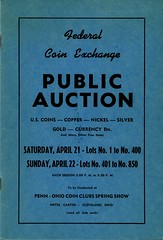 The Martin Gengerke and John Adams auction catalog references both list a Federal Coin Exchange sale #1 of April 21, 1946, but being “not seen”. The date of this sale seems questionable, given that that was an Easter Sunday, as well as being in close proximity to FCE sale #2, which was held on May 24, 1946.
The Martin Gengerke and John Adams auction catalog references both list a Federal Coin Exchange sale #1 of April 21, 1946, but being “not seen”. The date of this sale seems questionable, given that that was an Easter Sunday, as well as being in close proximity to FCE sale #2, which was held on May 24, 1946.
Since Charles Davis’ cataloguing of the Armand Champa Library Sales in 1994-1995, we’ve known that the first standalone Federal Coin Exchange catalogue was actually dated February 23, 1946. (Champa Part 4, 11/28/95, lot 3462). Karl Moulton also confirms that his Prices Realized List for this sale states “Auction #1”.
I recently had a chance to study an FCE sale having the date of Saturday April 21 & Sunday April 22. No year was given, but I first assumed it was the missing 1946 Gengerke/Adams sale. However, the sale contained several coins dated 1950, and Saturday did not fall on April 21 in 1946. The only nearby year that contained a Saturday April 21 was 1951.
I believe that this April 21-22, 1951 sale was incorrectly reported to Gengerke/Adams as a 1946 sale, and that the record should be re-written as:
#1 2/23/46 (32pp, 1333 lots) (per Davis & Moulton)
#2 5/24/46 (as in Gengerke)
##3 11/23/46 (as in Gengerke)
##4 1/18/47 (as in Gengerke)
##5 4/26/47 (as in Gengerke)
##6 10/25/47 (as in Gengerke)
##7 2/21/48 (as in Gengerke)
##(7a) 4/21/51 (18pp, 866 lots)
##(8) 11/01/52 (as in Gengerke)
#…
Given the big date gaps of the above, are there even more unrecognized FCE sales out there?
Thanks to David Fanning, Karl Moulton, and Charles Davis for their assistance.
QUERY: REAGAN FIRST TERM INAUGURAL MEDAL INFORMATION SOUGHT
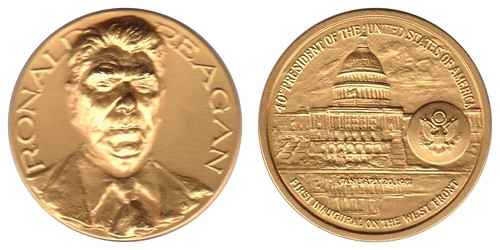
Skip Lane writes:
I have an unlisted variety of Ronald Reagan's official first term inaugural medal and it was suggested that one (or more) E-Sylum subscribers might be able to give me a bit more information on it. The medal is 32 mm, 20.7 grams, appears to be gold, edge marked "BRONZE G/P". I assume it's gold plated bronze.
Joe Levine's inaugural medal web site lists a gold medal at 32 mm. but no plated pieces. I speculate it is a sample - perhaps gold plated versions were considered and ultimately rejected. I have been in contact with Joe Levine (who I believe is THE guy to see on these) and he responded that he was aware of one other similar piece with slightly different edge lettering but had no other information regarding it. If anybody here knows anything about it I'd be happy to hear what.

QUERY: 1902 PARIS IN LONDON EXHIBITION MEDAL UNIQUE?
Imre Kiralfy was an accomplished international producer and director of plays, stage spectaculars and exhibitions around the world. In 1893 he built a reproduction of the Chicago Columbian Exposition on the grounds of Earl’s Court in London replete with a larger (308 feet tall vs. 264 feet) Ferris wheel than the original Chicago one, an amusement park, and palatial exhibition buildings. This exhibition was followed by the Empire of India Exhibition in 1895 and other expos including the 1902 Paris in London Exhibition. It was Kiralfy’s idea to invite exhibitors from the Paris 1900 Exhibition Universelle World’s Fair to his smaller scale version at Earl’s Court in 1902.
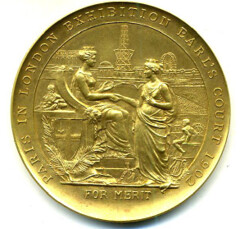
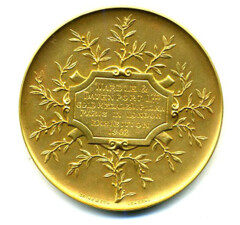
Information on this exhibition is quite scarce as it is not considered an official world’s fair because of its nature and size. My search for information on the fair on Google and through the interlibrary loan system (ILL) turned up only one extant reference copy at the Getty Museum library of the “Paris in London [at] Earl’s Court Official Guide & Catalog 1902” by “Imre Kiralfy Director General”. The Getty Museum graciously digitized the catalog which can now be obtained by the public at: http://www.archive.org/details/parisinlondon19000lond
My interest in this relatively obscure exhibition was ignited by Joe Levine’s (Presidential Coin & Antique Company) recent email sale list #4 where he offered for sale the magnificent gold award medal from the 1902 expo pictured above. The medal is 45.5 mm diameter and weighs 52.9 grams. It is edge-marked 18 ct and has a tiny Spink & Son London lettering at the bottom of the reverse. Levine’s listing nicely described this uncirculated medal as follows:
“The obverse legend, PARIS IN LONDON EXHIBITION EARL’S COURT 1902, surrounds a scene in which a seated figure of Londonia is shown shaking hands with a standing figure representative of Paris. At left is the Arms of London and above, a river god probably representative of the Thames. At right is a small figure of Industry. In the central background is a view of Earl’s Court showing, among other sights, the Great Wheel, which was a feature attraction from the time it was built in 1894 until the time it was demolished in 1907. FOR MERIT, inscribed in the exergue.
The reverse bears an octagonal shield engraved: WARDLE &/ DAVENPORT LTD. / GOLD MEDAL & DIPLOMA/ PARIS IN LONDON/ EXHIBITION/ 1902.
The medal awardee, Wardle & Davenport, was a silk and cotton thread manufacturer located in Leek, Staffordshire, England. The Official Guide & Catalog describes the company’s products including: “Peri-Lusta cotton threads dyed and treated with Mercerisation, and afterwards by a patented process, and also Esplen-D’or, an artificial silk of great brilliance well adapted for working with Peri-Lusta.”
This listing also states that “...examples of needlecraft done with the above...” are present at the exhibit.
Neither this medal nor any other from this exposition is listed in either: Brown, L., British Historical Medals: 1760-1960; 3 volumes; Reprint: London, 2007 or in Eimer, Christopher: British Commemorative Medals and Their Values: London, 2010.
I’ve contacted Joe Levine, Chris Eimer and Spink & Son Ltd. (London) to find out more about the rarity of this medal. Spink’s commemorative medal specialist Richard Bishop wrote to me, “I do not know of any written records here at Spink… the firm made many prize medals and records do not exist.” Chris Eimer said: “The medal that you have is unquestionably rare and it may well be that just a handful of examples were awarded, with perhaps yours the only survivor today.” Joe Levine has never handled any other medal from the Paris in London Exhibition of 1902 prior to mine.
I would appreciate it if any reader would be so kind as to provide me with any additional information you might have regarding this medal, even if this results in disabusing me of my fantasy that I own a unique award medal.
ELECTRONIC OPTION FOR PLATES IN NUMISMATIC LITERATURE
Back in the summer, there was a flurry of posts about the best way to place coin images in books.
People fell into three camps: 1) images should be integrated into the catalog, 2) images should be collected in plates at the back, or 3) images should appear in both places (double-plating).
At the time, I had a fourth option up my sleeve, but no way to demonstrate how it worked. This problem is now solved and I can show people the fourth way.
I decided to do the second edition of "Celtic Coinage of Britain" as an interactive web site. The web site uses "meta content" to get around the problem of image positioning. Meta content roughly means "content about content" or, as we traditional types like to put it, "background information".
The e-version will have about 60 plates, similar to those at the back of the original book. However, there will be no running catalog at all. If you want to see a catalog listing, you put the cursor on the coin image and the catalog description shows up in a box with a 3x image of the coin. When you move the cursor away, the box disappears. On a tablet or smart phone, the site works almost the same - but touch screens do not support the disappearing box feature, so you have to close the box manually.
The site compresses 500 pages of the original book into just 60 plates, with no shuffling back and forth. It also solves another problem raised by readers last summer - that of cost. E-version access to the entire content will be given absolutely free to the general public.
In any event, a TEST SITE is up and running on the Internet, and I invite everyone to look at it: www.vanarsdellcelticcoinageofbritain.com .
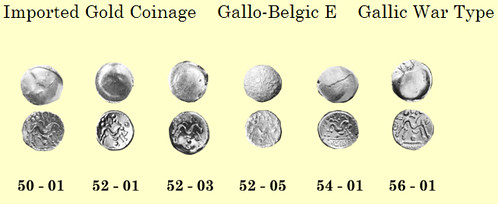
It will be many months before the site shows up on a Google, Yahoo! or Bing search, so people will have to enter the full URL into the "go to" window on their device, not the Google, Yahoo! or Bing search window.
It will be several months before the full content of the site is coded, and it is not too late to make some changes to the way the site works. If readers would like to make suggestions, they can reach me at vanarsdl@charter.net .
To read the earlier E-Sylum article, see: READER THOUGHTS ON PLATES IN NUMISMATIC LITERATURE (www.coinbooks.org/esylum_v15n38a06.html)
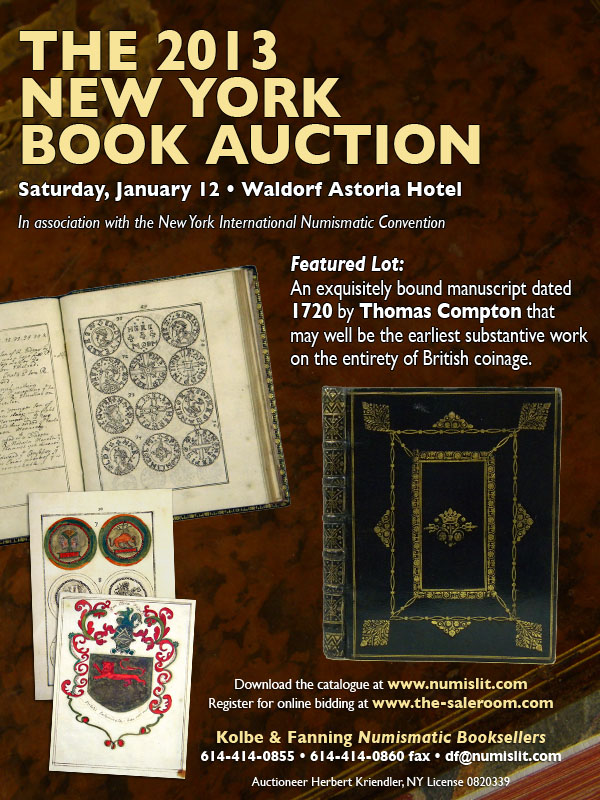
DURASAFE COMPOSITE BANKNOTE PAPER ANNOUNCED
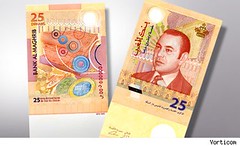 A first peek at what the currency of the future looks like comes from Morocco, which this week is rolling out notes made from a high-tech composite called Durasafe. Made by Vancouver-based Fortress Paper Ltd. (FTP: TSX) -- which also produces paper for the Swiss franc and the euro -- the technology behind Durasafe is designed to foil even the canniest counterfeiters.
A first peek at what the currency of the future looks like comes from Morocco, which this week is rolling out notes made from a high-tech composite called Durasafe. Made by Vancouver-based Fortress Paper Ltd. (FTP: TSX) -- which also produces paper for the Swiss franc and the euro -- the technology behind Durasafe is designed to foil even the canniest counterfeiters.
Morocco's new 25-dihram note is a sandwich of two thin sheets of cotton banknote paper surrounding a layer of polymer (the blue in the diagram below). Each piece of the three-layer composite is die-cut separately at asymmetrical intervals. The holes create tiny "windows" that offer a glimpse of interior security features, such as a magenta/green color-shift thread and a watermark of King Mohammed VI. The technology will also launch next year in two undisclosed countries, one in Africa and the other in Eastern Europe.
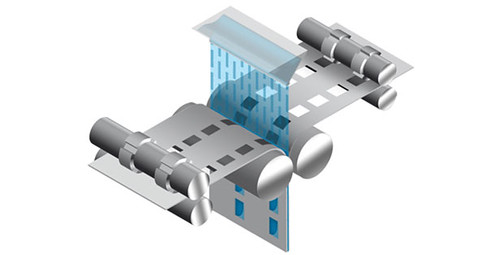
The United States, too, is about to turn its currency's security up a notch. Fortress's president, Chad Wasilenkoff, estimates that there are 1 million counterfeit U.S. bills in circulation, and the quality of fakes gets better all the time. In 2008, Crane & Co., which prints U.S. banknotes, started using a nano thread in $100 bills that only becomes visible when held to the light. The $5 bill also uses color-shifting ink and an embedded watermark to heighten security.
Crane has some other cool tricks in the works. Doug Crane, vice president of business development and government relations, says the company is working on microscopic lenses and "motion technology," in which an image on the paper appears to move depending on how a bill is tilted.
To read the complete article, see: Building a Better Bill: To Curb Counterfeiting, Paper Goes High-Tech (www.dailyfinance.com/2012/12/26/building-a-better-bill-to-curb-counterfeiting-paper-goes-high/)
MORE ON WEIGHING SLABBED COINS
I write further to Bob Lyall's comments on 'weights' of slabbed coins (Vol. 15; No. 53; 23 Dec. 2012)
As Bob rightly points out the weight of plugged and countermarked gold, used in North American (Regulated Gold) and extensively in the West Indies, is crucial in narrowing down possible origin areas for these silver/gold smiths countermarks. There were a number of different weight standards throughout both regions mentioned above and to complicate this even further, as Bob has pointed out, many contemporary counterfeits (some of 'good gold' but simply light weight) are involved. So the weight is of paramount importance.
The other area that concerns me is that I have seen a number of instances where 'modern fakes' have been slabbed. The silver host coin is genuine, but the countermarks are of modern fabrication. This can lead to big problems in the future ... credibility of the slabbing company; loss of value to the purchaser and confusion in understanding good and bad countermarks, as these modern fakes gain a legitimate status by being slabbed. I will also mention that ‘contemporary forgeries’ are an important part of the West Indies series. They are very collectable and in some cases as rare as the official specimens. I think that these contemporary forgeries would pose a problem for the slabbing companies to handle.
Perhaps the slabbing companies should rethink the type of coins they should be slabbing and perhaps cut, countermarked, plugged and hammered coins should not be slabbed, but a better way sought to provide confidence to collectors of this material who need this type of assistance. An important aspect in the study of countermarked coins (and YES, there are modern fakes that make life difficult) is the ability to 'handle these coins' as with experience 'feel' is an important tool in determining the sheep from the goats.
To read the earlier E-Sylum article, see: WEIGHING SLABBED COINS (www.coinbooks.org/esylum_v15n53a09.html)
COMBIBAR: THE BREAKABLE GOLD BULLION BAR
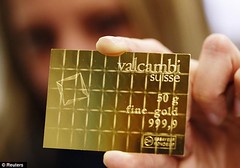 With Christmas coming, sales of chocolate gold coins have no doubt soared as parents get ready to fill their little ones' stockings with edible treasure.
With Christmas coming, sales of chocolate gold coins have no doubt soared as parents get ready to fill their little ones' stockings with edible treasure.
But wealthy individuals worried about what the New Year could bring are instead stocking up on gold chocolate bars.
Swiss refinery Valcambi has been selling its CombiBar to private investors in Switzerland, Austria and Germany who are worried about a return of Weimar Republic-style hyperinflation.
The size of a credit card, the 50g gold CombiBars are easily be broken into one gram pieces to be used as money in times of crisis.
Now the company wants to bring them to market in the U.S. and build up sales in India - the world's largest consumer of gold, where it has long served as a parallel currency.
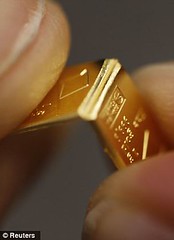 Mr Mesaric said the advantage of the CombiBar - dubbed a 'chocolate bar' because pieces can be easily broken off by hand - is that it is easily carried and is cheaper than buying 50 one gram bars.
Mr Mesaric said the advantage of the CombiBar - dubbed a 'chocolate bar' because pieces can be easily broken off by hand - is that it is easily carried and is cheaper than buying 50 one gram bars.
'The produce can also be used as an alternative method of payment,' he said.
In Europe, demand is particularly strong among the Germans, still scarred by post-World War One hyperinflation, when money became all but worthless and it took a wheelbarrow full of notes to buy a loaf of bread.
'Above all, it's people aged between 40 and 70 that are investing in gold bars and coins,' said Mr Mesaric. 'They've heard tales from their parents about wars and crises devaluing money.'
The CombiBar is particularly popular among grandparents who want to give their grandchildren a strip of gold rather than a coin, said Andreas Habluetzel, head of the Swiss business of Degussa, a gold trading company.
'Demand is rising every week,' Mr Habluetzel said. 'Particularly in Germany, people buying gold fear that the euro will break apart or that banks will run into problems.'
To read the complete article, see:
Fancy a chunk? No, it's not chocolate... It's a solid gold bar you can break up (and could be the future of money if there's economic meltdown)
(www.dailymail.co.uk/sciencetech/article-2251757/Fancy-chunk
-No-chocolate--Its-future-money-euro-goes-under.html)
NEW YORK PUBLIC LIBRARY RENOVATION PLANS RELEASED
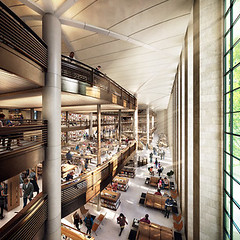 In the 10 months since the New York Public Library announced plans for a $300 million renovation of its Fifth Avenue flagship building, scholars and writers have accused the library of abandoning its commitment to research and questioned how the circulating library across the street could be shoehorned into a treasured landmark.
In the 10 months since the New York Public Library announced plans for a $300 million renovation of its Fifth Avenue flagship building, scholars and writers have accused the library of abandoning its commitment to research and questioned how the circulating library across the street could be shoehorned into a treasured landmark.
But something crucial has been missing from this debate: what the transformed library will actually look like. On Wednesday, that will become clear when the library unveils the design by the British architect Norman Foster. Using space at the back of the building now occupied by seven floors of stacks, Mr. Foster has essentially created a major new contemporary library within Carrère & Hastings’s neo-Classical one.
The plans call for opening the building’s central axis from the Fifth Avenue entrance through to the Bryant Park side, where there will be a four-level atrium, with bookshelves, sitting areas and desks, that will replace the stacks space, which is now closed to the public. For the first time since the library was completed in 1911, patrons will be able to view Bryant Park through the tall, narrow windows on the ground floor.
“We need to be respectful of the beloved, iconic building and to create a new inspiring space,” Anthony W. Marx, the library’s president, said in an interview in his office in the Fifth Avenue building. “At a time when people wonder about the future of libraries, we’re going to create the greatest library the world has ever seen.”
The plan initially provoked controversy because the library had proposed moving most of the books in the stacks into storage in New Jersey to make room for the new circulating library. Scholars and writers protested that the renovation would result in long waits to retrieve the off-site books and diminish the library’s role as a leading reference center. The money, they argued, should be directed instead toward rejuvenating dilapidated branch libraries.
In response, the library recently revised its plan with the help of an $8 million donation to create more space for books beneath the new circulating library so that 3.3 million of the research library’s 4.5 million volumes will remain on site.
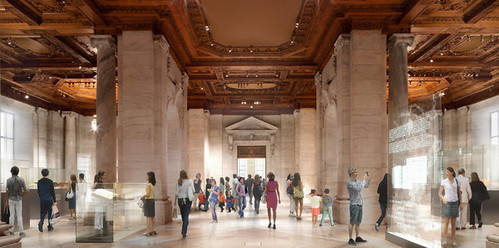
To read the complete article, see:
After Criticism, Public Library Offers Peek at Renovation Plans
(www.nytimes.com/2012/12/19/arts/design/new-york-public-library
-offers-peek-at-renovation.html)
AN 8 REALES 1812 SOMBRERETE (ZACATECAS)
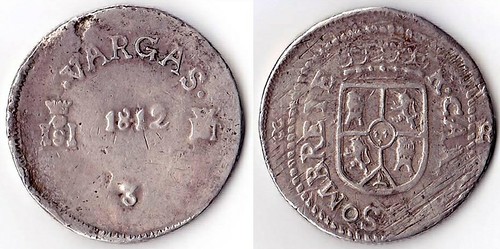
8 Reales 1812 Sombrerete (Zacatecas)
This coin was issued exactly 200 years ago in the little town of Sombrerete in central Mexico in the state of Zacatecas. It is considered both a Spanish coin, as it was issued by the Royalists loyal to the Spanish Crown, and a Mexican coin. The latter not only due to the obvious reason of it having been made in Mexico, but also because it came into existence as a local emergency issue, when the ongoing War for Independence, the Mexican rebellion against the Spanish colonial rulers, had made it almost impossible to bring the silver mined around Sombrerete to the mint in Mexico City.
Don José María Vargas Machuca was the superintendent of the mines of the region, and he supervised the production of these coins. Why he so prominently placed his name on them, is one of the mysteries surrounding these coins, just like the meaning of the number “3” that is found on all 8 and 4 reales coins of the series.
Another mystery is the incorrect spelling of the town “Sombrete” on all 8 and 4 reales – one might think that this was the way the name of the town was spelled 200 years ago, but then, on the much smaller 1 and 1/2 reales, the name is given as “Sombrerete”!
Note to the numismatists: the catalogs usually do not distinguish the varieties of this type. Only Calicó makes a difference between a variety with and one without a dotted border on the reverse – however, most coins show at least parts of a dotted border of some kind.
With regard to the most noticeable variants, this coin has a large shield with large letters obverse (with the denomination readable), small date, plane 2 in date, no dot after “3”.
The scratches on the coin, which are frequently seen in this series, are usually described as adjustment marks, however, as they are usually long, deep and parallel, I very much assume that they were created during the production of the coin planchets.
To read the complete article, see: www.facebook.com/photo.php?fbid=4329693123944&set=np.305819035.628557699
FEATURED WEB PAGE: BRITISH MUSEUM U.S. HOLDINGS
This week's Featured Web Page is suggested by Saul Teichman. It's a search result page listing (at this writing) 1,582 images of United States coins in the collection of the British Museum. Saul writes:The collection has nice Rosa Americana colonials including 3 1717 prepatent pennies, not noted when Hodder cataloged the Ford sale and the 1733 post patent proof including a steel obverse splasher, nice early copper and silver, some territorial gold including a Wass Molitor $50 and a couple of nice US gold coins highlighted by a 1796 with stars quarter eagle and an 1869-S half eagle that looks to be the finest known.

Brisith Museum U.S. Coin Holdings

